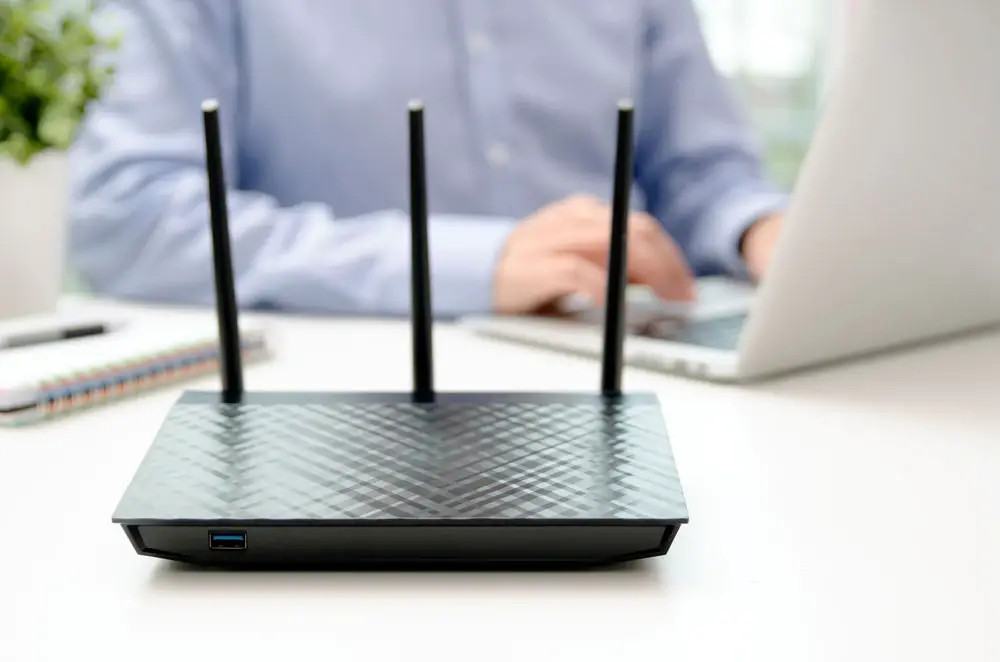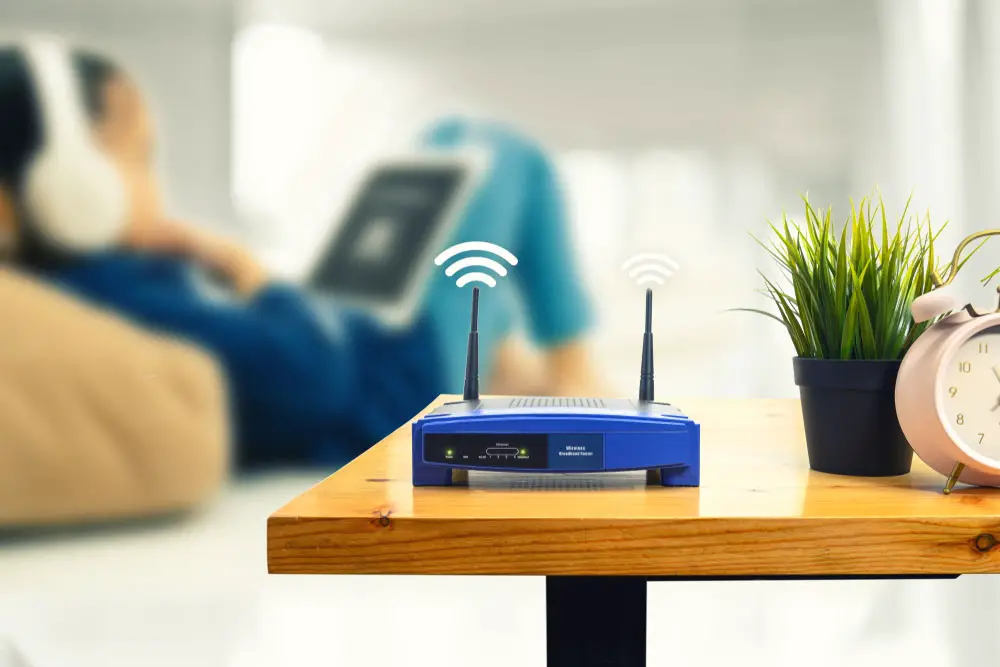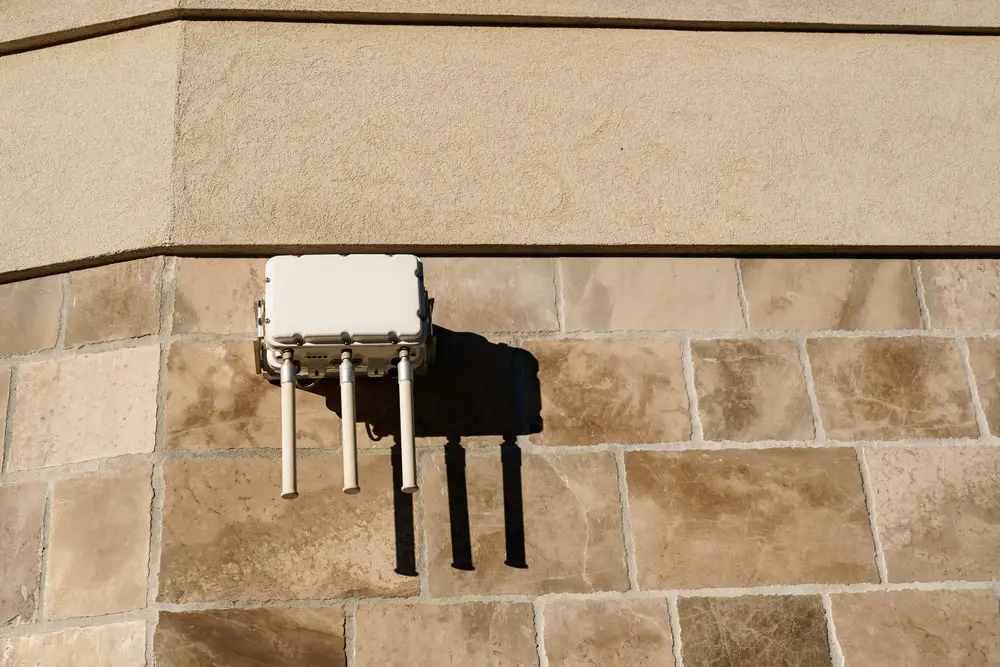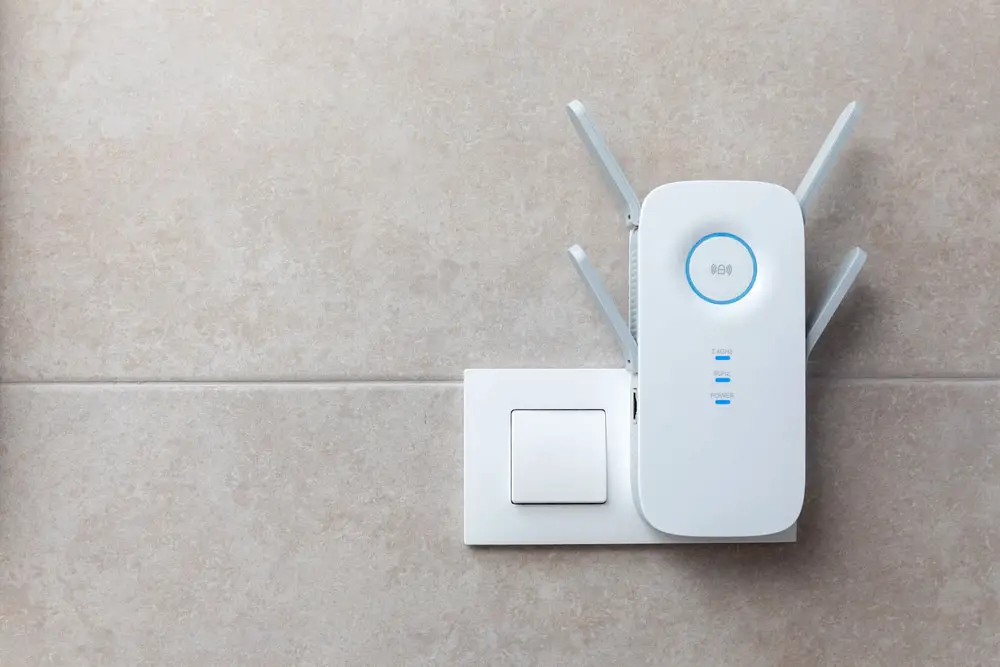Discovering the best location for your Starlink router is crucial to optimizing your internet experience.
This guide will help you understand the importance of router placement and the challenges associated with finding the perfect spot.
Learn how environmental factors, router settings, and home layout influence your Wi-Fi signal strength.
With our advice, you can make decisions that improve your connectivity and ensure seamless internet access throughout your home.
Table of Contents
- Wi-Fi Signal Mechanics
- Grasp the Impact of Location on Starlink Router Efficacy
- Determining Ideal Router Placement
- Factors to Ponder for Outdoor Router Placement
- Strategies to Overcome Wi-Fi Dead Zones
- FAQs
- Summary
Wi-Fi Signal Mechanics
Wi-Fi routers possess antennas that emit signals. Sometimes integrated into the device, these antennas often protrude like rabbit ears on dated TVs and are adjustable.
Electric waves form the signal, with each antenna emitting multidirectional signals.
The strongest signals form an elliptical shape perpendicular to the antenna, resembling a donut with the antenna piercing the center.

A woman with a laptop using wi-fi
Antenna Adjustment
For routers with adjustable antennas, repositioning proves advantageous. It enhances signal coverage and device connectivity.
Optimal reception occurs when antennas align parallel to the device’s receiver.
Remember, Wi-Fi signals travel linearly, despite their expansive, circular coverage.
Obstacles between the router and device may impede signal strength, although some signals may ricochet off surfaces.

Man connecting antenna to Wi-Fi router
Grasp the Impact of Location on Starlink Router Efficacy
Starlink, a satellite-driven ISP, is revolutionizing high-speed internet for remote regions.
Nevertheless, the location significantly influences router performance.
Attitude, landscape, foliage, and climate alter connection strength and velocity.
For instance, elevated locations may experience weaker satellite signal strength, diminishing internet speeds.
Similarly, dense tree coverage can obstruct signals, hampering performance. Additionally, weather patterns, such as storms, can disrupt the signal.
In summary, recognizing the environmental influence on Starlink router functionality is crucial.
Users can optimize their connection by understanding how location-related factors impact their device’s performance.

A wireless router
Determining Ideal Router Placement
When deciding where to position your router, adhere to these simple rules for optimal Wi-Fi signal and minimal interference:
Centralize Your Router in Your Network
Place the router centrally to ensure even signal distribution across your house.
Most contemporary routers possess adequate range to cover an average-sized home completely.
Minimize Router-Related Issues
Wi-Fi signals can pass through walls and objects, but materials like metal, stone, water, and tile can weaken them significantly.
Consider obstructions between your router and vital Wi-Fi areas, like your office or living room.
Wi-Fi can penetrate walls, but this weakens the signal. If possible, avoid walls.
In an ideal situation, your device and the router would be visible to each other.
Position the router for devices in other rooms so its signal passes through the fewest walls.
Elevate Your Router
Raising your router off the ground often improves your home network signal. It helps you circumvent large furniture and prevents signal loss into the ground.
Place it on a table or bookshelf, or use a wall mount.

Router on a table
For multi-story homes, the optimal router location is still in the middle of the house, near the ceiling on the first floor or the ground on the second floor.
In both cases, consider furniture placement to avoid signal blockage.
Keep Distance from Other Gadgets
Walls and large objects, as can electronic devices, can disrupt your Wi-Fi signal.
TVs and computers are culprits, but microwaves are the worst offenders.
Microwaves emit radiation wavelengths similar to Wi-Fi signals, so placing them near each other will likely cause Wi-Fi disruption.
Factors to Ponder for Outdoor Router Placement
Place your router indoors to optimize your Wi-Fi signal and protect it from the weather.
Despite its resistance to dust and water, Starlink advises indoor placement. Consider the following for outdoor router placement:
- Weather: Starlink routers operate within -30°C to 50°C (-22°F to 122°F) temperature ranges. Excessive water, dust, heat, or cold can damage the router. Consider acquiring a weatherproof enclosure for enhanced protection.
- Accessibility and Location: The Starlink router powers the satellite dish, necessitating easy access for maintenance or troubleshooting. Ensure the installation site has AC power availability.
- Wi-Fi and Ethernet Connectivity: Devise a plan to extend Ethernet and Wi-Fi from the outdoor router to your home’s interior.
- Building Codes: Consult your local code department to confirm your installation strategy complies with all building regulations.

Outdoor router
Strategies to Overcome Wi-Fi Dead Zones
Despite discovering the optimal router location, practical constraints might impede setup.
Exterior power cables or fiber jacks and irregular floor plans are common issues. To enhance Wi-Fi range, consider these suggestions:
Prioritize High-Traffic Zones
Centrally locating the router is ideal, but prioritize specific rooms if necessary.
Placing the router near a home office and living room may result in a weaker kitchen signal but improved connectivity where needed.
Selecting where Wi-Fi dead zones occur, if unavoidable, is preferable.
Avoid Ethernet Cables
Inaccessible Wi-Fi spots may exist due to added rooms or thick walls. An Ethernet cable resolves this by circumventing obstructions, unlike Wi-Fi signals.
This solution suits those with specific nook preferences but may be impractical for sprawling residences.
Choose the Right Router
Consider a different router type if your home is too vast or has dead zones.
A long-range, single router or Wi-Fi extenders and mesh routers can cover larger areas and navigate around barriers.

Wifi extender
FAQs
In which room should I set up my wireless router?
Position the router centrally for a uniform wireless network. However, if specific devices require Ethernet connections, situate the router near them.
Which floor is better for a router?
Elevated router placement enhances signal reach, making the upper floor superior to the ground level or basement.
What steps must I take to relocate my wireless router?
For router relocation, ensure the new room has an active internet connection.
Summary
Select the best location for your Starlink router to maximize Wi-Fi signal strength and coverage.
Factors such as position, antenna adjustment, interference, and home layout matter. Optimize your internet experience by minimizing dead zones.
Strategically place your router indoors or outdoors for reliable connection in every corner of your home.
Enhance your Wi-Fi network and stay connected with this guide, no matter where you live.
